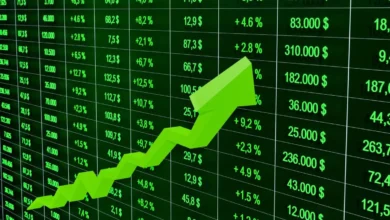Indian Stock Market Crash: Sensex and Nifty Face Sharp Decline Amid Global Weakness and FII Sell-off

Indian Stock Market continues its downward spiral, with no signs of a halt in the ongoing decline. On January 13, 2025, both major indices, BSE Sensex and NSE Nifty, opened in the red, signaling another challenging day for investors. The Sensex saw a massive plunge of 843.67 points, opening at 76,535.24, while the Nifty fell 258.8 points to 23,172.70 in early trade.
Why is the Indian Stock Market Falling?
The decline in the Indian stock market can be attributed to a mix of weak global cues and foreign institutional investors (FII) pulling out capital. Early morning trading on Monday showed the brunt of this, as investors reacted to the negative sentiment abroad and a continuous outflow of foreign funds. According to market data, FIIs were net sellers on Friday, offloading shares worth ₹2,254.68 crores.
Rupee Weakens Against Dollar; Market Capitalization Takes a Hit
The Indian Rupee also faced pressure, losing 23 paise against the US Dollar, hitting its lowest level. The fall in the currency had a ripple effect on the stock market, leading to significant losses for investors. Today’s market crash caused a substantial loss in market capitalization, with investors losing ₹4.53 lakh crore. The total market capitalization of BSE-listed companies now stands at ₹225.14 lakh crore.
Worst-Performing Stocks of the Day
Among the worst performers in the Sensex-listed companies were Asian Paints, Zomato, Mahindra & Mahindra, HDFC Bank, Bajaj Finance, Kotak Mahindra Bank, and Tata Steel. These stocks suffered the heaviest losses during the morning trading session. On the other hand, stocks like IndusInd Bank, Axis Bank, Tata Consultancy Services, and Hindustan Unilever showed some resilience and were in the positive zone.
Stocks that Took a Hit
Sensex components saw significant declines in several stocks, including HindPetro, which dropped 7.03%, and PCBL, which fell by 8.06%. JustDial’s stock faced an even steeper fall, plummeting 8.62%.
Global Markets Show Negative Trends
Asian markets, including South Korea’s KOSPI, Hong Kong’s Hang Seng, and China’s Shanghai Composite, also suffered losses, following a negative trend in the US markets, which closed on a downbeat note on Friday. On the commodity front, international benchmark Brent Crude rose by 1.62% to $81.05 per barrel, adding to the inflationary pressures.
With continued weak global indicators and the persistent FII sell-off, the Indian stock market faces another volatile week ahead. Investors are bracing for further turbulence as the market struggles to regain stability.



